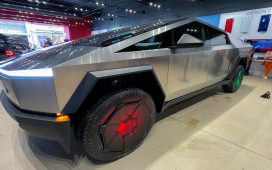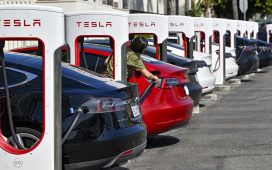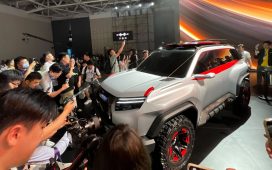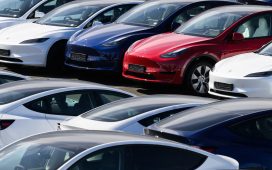Q: What is your outlook for the rest of 2021 and 2022?
A: That is a difficult question because of the semiconductor shortage. We had good momentum, then coronavirus outbreaks in the Far East closed down some of our component suppliers, including those providing semiconductors. As a result, we lost production of about 50,000 vehicles.
We offset this by really reducing our stock levels; therefore, the actual registrations loss was about 30,000 compared with last year. But now the dealer stock is very low because they have sold out everything they have. The fourth quarter definitely looks like it will be better, so the loss in production will be lower, but any losses will result in lost retail sales.
Overall, things will be better in the final quarter of 2021, but they still will not be back to normal. By the first quarter of next year, we should be back on track with only minor disruption from the chip shortage. It’s too early to say what that will mean for the full-year results in 2022.
Will you still be able to set a global sales record in 2021 by topping the 705,452 vehicles Volvo sold in 2019?
It’s within reach, but it depends on how the production problems in the Far East develop. We are close, so maybe we will celebrate a new all-time high. It’s not impossible.
What about the target of 800,000 sales? Will this goal get pushed to 2022 or 2023?
Absolutely. We thought we were more or less on our way to get there because after the first half of this year, when we added up the previous 12 months of actual figures (June 2020 until June 2021), we were at about 775,000.
At that point you could almost round up to 800,000. But since then, we have dropped back because we lost so much production in the third quarter.
What are the indicators that show the chip crisis is coming to an end?
We see it in the confirmed deliveries from suppliers. After having big cuts in the third quarter, better volumes of components are coming in. As a result, we will have to close our factories and halt production less often in the fourth quarter.
How much is the pandemic still impacting business?
When it comes to the day-to-day basis, here in Sweden, we are back to normal. You don’t see anybody wearing masks, not even when you’re traveling within the country on an airplane. Most people are back in their offices.
The big problem we have when it comes to conducting business is traveling to the U.S. and China. China is still very isolated. We haven’t been there in almost two years.
We are planning to go to the U.S. in the coming months. While we have gotten much better at remote meetings, sometimes you really want to meet people face-to-face.
What effect is it having on how Volvo retails vehicles?
We are shifting to online sales, direct sales and electrification, and you can’t get people to make the transition by simply writing an email and asking them to get things implemented by Monday.
This is slowing us down as we try to get everybody to understand the objectives and execute the changes. How much of an impact this has is unknown. But we probably would be further along if we didn’t have the restrictions.
I have been really frustrated that we cannot speak with our retailers face-to-face in many places because of the restrictions.
Volvo wants half of all global sales to be done online by 2025. Where do things stand now?
We are at 5 to 10 percent in the markets where we offer this. Germany is close to 10 percent and the U.S. is at about 5 percent. We also offer online sales in Holland, Sweden and Norway. On top of that, all of our full-electric cars will only be sold online. Right now, they account for 3 to 4 percent of our sales. (Volvo’s goal is for 50 percent of all global sales to be full electric by 2025.) We will have a big step increase in EV capacity next year when we have a full year of sales of the C40.
One of your long-term goals at Volvo was to have an operating margin of 8 to 10 percent. In the first half, helped by better pricing, the margin was 9.4 percent. How sustainable is that level of profitability?
When it comes to this year, we will be back to pre-coronavirus levels, which is a margin of about 5 to 6 percent, like we had in 2019 (when the full-year margin was 5.2 percent). From there, we will move forward. By mid-decade it should be at 8 to 10 percent, so we need to be around 3 percentage points better.
How will you do that, especially when the shift to full-electric vehicles will initially add cost?
We need to offset that cost by developing cars more affordably, which includes using common architectures within the Geely Group and also by simplifying the car. This will happen because with EVs, we will no longer need things such as fuel tanks and engines.
The goal is that by mid-decade, the cost to produce an electric car will match the cost of making a mild hybrid today.
But that does not give us any profitability improvement. That is why it’s crucial to find a more efficient way to distribute and sell cars. That’s an area where we can really be better. This will include transparent, consistent pricing so we avoid internal competition and discounting. We also want a simpler product offering, which will allow us to better manage our stock and reduce capital costs. All of that should improve profitability.
Does listing the company in public trading help boost your profitability?
Very indirectly. When you have to explain your strategy to investors you get sharper. Those smart questions that came up during the listing process were very helpful. Also, being forced to report where you are on a quarterly basis is a bit unpleasant when you have bad results, but it is an opportunity to explain what you are going to do to be better in the future. The scrutiny is good.
In addition, the listing makes the company a bit more attractive as we try to build up our expertise in, for instance, the software area. People often like working for a listed company where they have the possibility to purchase shares and be enrolled in a stock-based bonus program.
Volvo has aggressively moved into plug-in hybrids, but now the transition to full electrification has accelerated, especially in Europe. If you could do it over again, would you put more emphasis on battery-electric vehicles and less on plug-in hybrids?
Only if we would have known five years ago that the charging network would be sufficient as of today. That has not happened. Therefore, plug-in hybrids were a necessary intermediate step.
I think long term there will be very few plug-in hybrids, but that will only happen when we have a large enough charging infrastructure.
On the plus side, about 40 percent of our sales in Europe are plug-in hybrids. That’s a step toward electrification. All of those customers are closer to moving into a full-electric car than if they had purchased another diesel. Therefore, we made the right decision.








